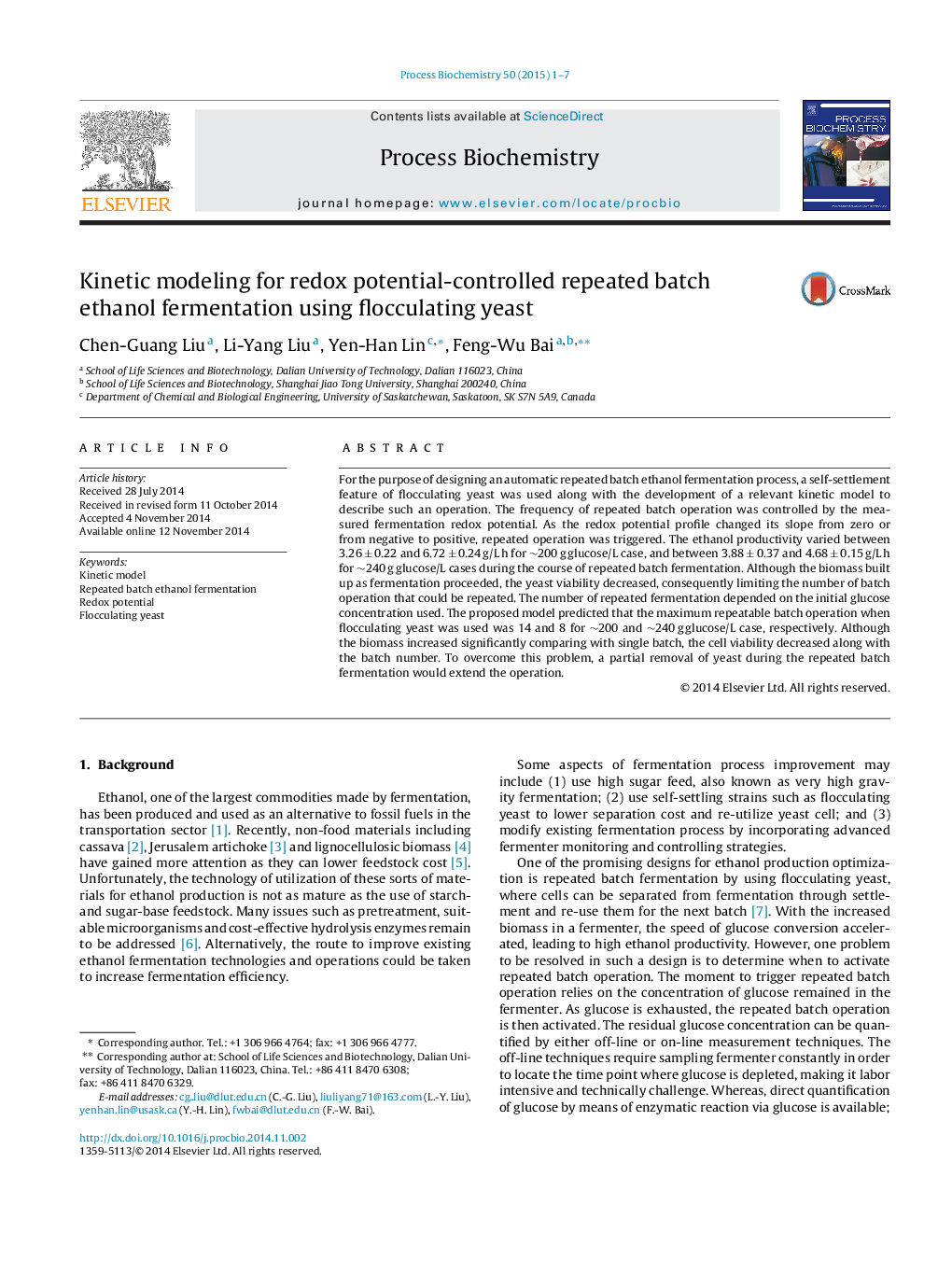| Article ID | Journal | Published Year | Pages | File Type |
|---|---|---|---|---|
| 34465 | Process Biochemistry | 2015 | 7 Pages |
•Develop a kinetic model for the operation of repeated batch ethanol fermentation.•Model flocculating yeast under redox potential-controlled environment.•Incorporate self-settlement feature of flocculating yeast into model development.•Improve overall fermentation efficiency by including partial yeast cell recycle.
For the purpose of designing an automatic repeated batch ethanol fermentation process, a self-settlement feature of flocculating yeast was used along with the development of a relevant kinetic model to describe such an operation. The frequency of repeated batch operation was controlled by the measured fermentation redox potential. As the redox potential profile changed its slope from zero or from negative to positive, repeated operation was triggered. The ethanol productivity varied between 3.26 ± 0.22 and 6.72 ± 0.24 g/L h for ∼200 g glucose/L case, and between 3.88 ± 0.37 and 4.68 ± 0.15 g/L h for ∼240 g glucose/L cases during the course of repeated batch fermentation. Although the biomass built up as fermentation proceeded, the yeast viability decreased, consequently limiting the number of batch operation that could be repeated. The number of repeated fermentation depended on the initial glucose concentration used. The proposed model predicted that the maximum repeatable batch operation when flocculating yeast was used was 14 and 8 for ∼200 and ∼240 g glucose/L case, respectively. Although the biomass increased significantly comparing with single batch, the cell viability decreased along with the batch number. To overcome this problem, a partial removal of yeast during the repeated batch fermentation would extend the operation.
